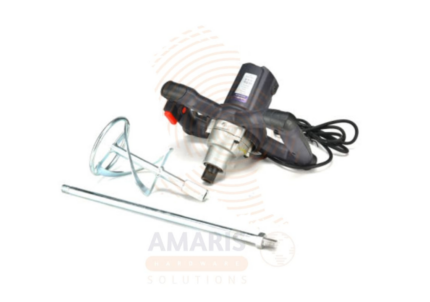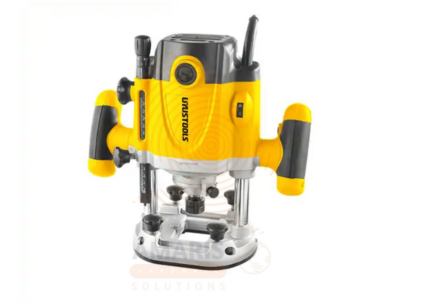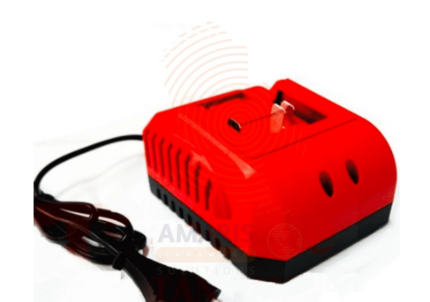Cement Blender
WhatsApp Order
A cement blender is a mechanical device designed for the purpose of mixing and blending various components of cementitious materials, such as cement, sand, and water, to create a homogenous mixture. This blended mixture is commonly used in construction and building projects, particularly for applications like concrete production. The blender typically features a rotating drum or container that facilitates the thorough mixing of the ingredients, ensuring a consistent and uniform composition for the construction materials.
Description
USES OF A CEMENT BLENDER
- Concrete Production:
- The primary use of a cement blender is in the production of concrete. It combines cement, aggregates (such as sand and gravel), and water to create a uniform and workable mixture that can be used for various construction applications.
- Construction Projects:
- Cement blenders are essential on construction sites for preparing the concrete needed for foundations, slabs, walls, and other structural elements.
- Road Construction:
- Cement mixers are used in the preparation of the concrete used for road construction, including the creation of curbs, sidewalks, and road surfaces.
- Masonry Work:
- Cement blenders are employed in masonry work for mixing mortar, which is used for laying bricks, blocks, and other masonry units.
- Precast Concrete Manufacturing:
- Industries involved in the production of precast concrete components, such as precast panels, beams, and columns, use cement blenders to create the necessary concrete mixtures.
- Repair and Renovation:
- Cement mixers are used in repair and renovation projects where concrete is needed for patching, resurfacing, or fixing existing structures.
- Landscaping:
- In landscaping projects, cement blenders can be used to mix concrete for various elements like retaining walls, decorative structures, or pathways.
- DIY Construction Projects:
- Cement mixers are commonly used in smaller-scale construction projects by homeowners and DIY enthusiasts for tasks such as building patios, small foundations, or other outdoor structures.
- Agricultural Applications:
- Some agricultural activities involve the use of cement blenders for mixing concrete for items like posts, foundations for structures, or troughs.
- Culvert and Drainage Systems:
- Cement mixers are utilized in the construction of culverts and drainage systems, where durable and well-mixed concrete is necessary for effective water management.
SAFETY HANDLING PRECAUTIONS
- Read and Understand the Manual:
- Before operating the cement blender, thoroughly read and understand the manufacturer's manual. Familiarize yourself with the equipment's specific features, capabilities, and safety guidelines.
- Personal Protective Equipment (PPE):
- Wear appropriate PPE, including safety glasses, gloves, steel-toed boots, and hearing protection. This helps protect against potential hazards such as flying debris, dust, and loud noise.
- Inspection and Maintenance:
- Regularly inspect the cement blender for any signs of wear, damage, or malfunction. Ensure that all safety guards and devices are in place and functioning properly. Perform routine maintenance according to the manufacturer's recommendations.
- Stable Foundation:
- Set up the cement blender on a stable and level surface to prevent tipping or imbalance during operation. Ensure that the equipment is securely anchored to the ground.
- Operator Training:
- Only trained and authorized personnel should operate the cement blender. Ensure that operators are familiar with the equipment's controls, emergency shutdown procedures, and safe operating practices.
- Loading and Unloading:
- Follow proper procedures when loading and unloading materials into the blender. Avoid overloading the equipment, as it can lead to stability issues and compromised safety.
- Electrical Safety:
- If the cement blender is powered electrically, make sure the electrical components are in good condition. Use extension cords that are appropriate for the equipment's power requirements, and keep them away from water or wet surfaces.
- Emergency Stop and Shutdown:
- Familiarize yourself with the emergency stop and shutdown procedures. Ensure that all operators know how to quickly and safely stop the equipment in case of an emergency.
- Ventilation:
- Work in a well-ventilated area to minimize exposure to dust and fumes generated during the blending process. Use respiratory protection if necessary.
- Avoid Loose Clothing and Jewelry:
- Avoid wearing loose clothing, jewelry, or other items that could get caught in the moving parts of the cement blender.
- Communication:
- Establish clear communication protocols among the team members. Use signals or verbal communication to coordinate loading, unloading, and other activities around the cement blender.
- First Aid and Emergency Response:
- Have a well-equipped first aid kit nearby and ensure that all personnel are familiar with its location. Establish emergency response procedures and contact information for quick assistance if needed.
Related products
Bi-Metal Hole Saw Set
A 9 PCS Bi-Metal Hole Saw Set refers to a collection of nine hole saws, each constructed with a bi-metal design. A hole saw is a cylindrical cutting tool used to create holes in various materials such as wood, metal, plastic, and more. The term "bi-metal" indicates that the hole saws are made from two different types of metals, typically high-speed steel (HSS) and a more durable alloy like cobalt. This combination enhances the hole saw's cutting performance, making it suitable for a wide range of applications and providing increased durability and longevity. The set typically includes hole saws of different sizes to accommodate various hole diameters, making it a versatile tool for professionals and DIY enthusiasts alike.
Cement And Paint Mixer
A cement and paint mixer is a mechanical device designed to efficiently and homogeneously blend cement or paint constituents to achieve a uniform and consistent mixture. Typically utilized in construction and painting applications, these mixers come in various designs, including portable or stationary models. They feature rotating blades, paddles, or agitators that facilitate the thorough mixing of dry or liquid materials, ensuring the creation of a well-mixed and homogeneous product suitable for construction or painting purposes.
Double – End Bits Set
PRODUCT DESCRIPTION
A Double-End Bits Set typically refers to a collection of interchangeable tool bits designed for use with screwdrivers, power drills, or similar tools. Each bit in the set has two distinct ends with different types or sizes of tips, allowing the user to perform various tasks without needing multiple individual bits. These sets often include a variety of common bit types, such as Phillips, slotted, Torx, or hex, providing versatility for different screw and fastener types. The double-ended design allows users to flip the bit and switch between different tips easily, making it a convenient and space-saving solution for various applications.
Electric Router
An electric router is a power tool used in woodworking and carpentry for hollowing out an area or creating a specific profile on the edge of a material, typically wood. It operates by spinning a cutting tool or bit at high speeds, allowing for precise and controlled removal of material. Electric routers are versatile tools and can be equipped with various bits to perform tasks such as shaping, grooving, trimming, and forming decorative edges. They are widely employed in both professional and DIY settings for tasks that require accurate and intricate detailing in woodworking projects.
Fast Charger
A fast charger is a device designed to quickly recharge compatible batteries with a voltage rating of 20 volts. The "fast" designation implies that the charger is engineered to deliver a higher charging current, allowing for a more rapid replenishment of the battery's energy capacity compared to standard chargers. This type of charger is commonly used for power tools, electronic devices, or other equipment that operates on 20V batteries, providing users with a more efficient and time-saving charging solution.
Fibre Strengthened Resin Cutting Wheel
PRODUCT DESCRIPTION
A fiber-strengthened resin cutting wheel refers to a cutting tool designed for various machining applications, particularly in the context of metalworking or construction. This type of cutting wheel is composed of a resin matrix, which serves as a binding material, reinforced with fibers for added strength and durability. The fibers are typically made of materials such as fiberglass or other composite materials.
The combination of resin and fibers enhances the cutting wheel's structural integrity, making it more resistant to breakage and providing improved performance during cutting operations. The reinforced design allows the wheel to withstand higher levels of mechanical stress and heat generated during cutting processes. Fiber-strengthened resin cutting wheels are commonly used in applications like cutting metal, steel, or other hard materials, where precision and durability are crucial.
Gasoline Auger Machine
A gasoline auger machine is a power tool designed for drilling holes in the ground using a rotating helical screw blade, commonly known as an auger. Unlike electric or manual augers, a gasoline auger machine is powered by a gasoline engine, providing greater mobility and independence from electrical power sources. This type of machine is commonly used in construction, landscaping, and agriculture for tasks such as digging holes for fence posts, planting trees, or installing various types of foundations. The gasoline engine provides the necessary power to turn the auger bit efficiently, making it suitable for heavy-duty and remote applications where access to electricity may be limited.
Glass Drill Set Hexagonal Handle
PRODUCT DESCRIPTION
A glass drill set with hexagonal handles typically refers to a collection of five drill bits specifically designed for drilling holes in glass surfaces. The term "hexagonal handle" indicates that the shank of each drill bit has a hexagonal (six-sided) shape, which can provide a better grip and prevent slipping when used with a compatible drill. These drill bits are specifically crafted for working with glass materials, offering precision and minimizing the risk of cracking or damaging the glass during the drilling process. The set may include different-sized bits to accommodate various hole diameters.


 Acrylic Sealants
Acrylic Sealants Construction Adhesives
Construction Adhesives Double-Sided Tape
Double-Sided Tape Duct Tape
Duct Tape Electrical Tape
Electrical Tape Epoxy & Resins
Epoxy & Resins Masking Tape
Masking Tape
 Automotive Wrenches & Socket Sets
Automotive Wrenches & Socket Sets Battery Chargers & Jump Starters
Battery Chargers & Jump Starters Car Jacks & Stands
Car Jacks & Stands Car Wash & Detailing Products
Car Wash & Detailing Products Diagnostic Tools
Diagnostic Tools Tire Inflators
Tire Inflators Vehicle Lighting
Vehicle Lighting Oil & Lubricants
Oil & Lubricants
 Adhesives & Sealants
Adhesives & Sealants Bricks & Blocks
Bricks & Blocks Cement & Concrete
Cement & Concrete Drywall & Plaster
Drywall & Plaster Flooring (Tiles, Wood, Laminate)
Flooring (Tiles, Wood, Laminate) Lumber & Plywood
Lumber & Plywood Paints, Primers & Coatings
Paints, Primers & Coatings Insulation Materials
Insulation Materials Roofing Materials
Roofing Materials
 Circuit Breakers
Circuit Breakers Electrical Cables & Wires
Electrical Cables & Wires Switches & Sockets
Switches & Sockets Fuses & Relays
Fuses & Relays Connectors & Terminals
Connectors & Terminals Electrical Boxes & Panels
Electrical Boxes & Panels Conduit & Fittings
Conduit & Fittings Lighting Fixtures & Bulbs
Lighting Fixtures & Bulbs Extension Cords & Power Strips
Extension Cords & Power Strips
 Anchors
Anchors Bolts
Bolts Clips & Clamps
Clips & Clamps Screws
Screws Nuts
Nuts Washers
Washers Rivets
Rivets Nails
Nails Threaded Rods
Threaded Rods
 Hammers
Hammers Measuring Tools (Tapes, Levels, Calipers)
Measuring Tools (Tapes, Levels, Calipers) Screwdrivers
Screwdrivers Pliers & Cutters
Pliers & Cutters Saws & Blades
Saws & Blades Chisels & Punches
Chisels & Punches Allen Keys & Hex Keys
Allen Keys & Hex Keys Ratchets & Socket Sets
Ratchets & Socket Sets Wrenches & Spanners
Wrenches & Spanners
 Power Tool Accessories (Blades, Bits, Discs)
Power Tool Accessories (Blades, Bits, Discs) Rotary Tools
Rotary Tools Saws (Circular, Jigsaw, Reciprocating)
Saws (Circular, Jigsaw, Reciprocating) Drills & Drivers
Drills & Drivers Grinders & Sanders
Grinders & Sanders Heat Guns
Heat Guns Nail Guns
Nail Guns Impact Wrenches
Impact Wrenches Batteries & Chargers
Batteries & Chargers
 Pipes & Fittings (PVC, Copper, PEX)
Pipes & Fittings (PVC, Copper, PEX) Plumbing Tools
Plumbing Tools Pumps & Motors
Pumps & Motors Sealants & Adhesives for Plumbing
Sealants & Adhesives for Plumbing Valves & Taps
Valves & Taps Water Heaters
Water Heaters Drainage Systems
Drainage Systems Faucets & Fixtures
Faucets & Fixtures Hoses & Tubing
Hoses & Tubing
 Hinges & Latches
Hinges & Latches Hooks & Brackets
Hooks & Brackets Window Hardware
Window Hardware Chains & Cables
Chains & Cables Casters & Wheels
Casters & Wheels Shelving & Storage Systems
Shelving & Storage Systems Door Handles & Locks
Door Handles & Locks Drawer Slides & Cabinet Hardware
Drawer Slides & Cabinet Hardware
 Personal Protective Equipment (PPE)
Personal Protective Equipment (PPE) Respirators & Masks
Respirators & Masks Safety Glasses
Safety Glasses Safes
Safes Security Cameras
Security Cameras Gloves
Gloves Helmets
Helmets Ear Protection
Ear Protection Fire Safety Equipment
Fire Safety Equipment Locks & Padlocks
Locks & Padlocks Motion Sensors & Alarms
Motion Sensors & Alarms
 Garden Fencing
Garden Fencing Garden Furniture Hardware
Garden Furniture Hardware Lawn Mowers
Lawn Mowers Trimmers & Edgers
Trimmers & Edgers Shovels & Spades
Shovels & Spades Rakes & Hoes
Rakes & Hoes Pruning Shears & Loppers
Pruning Shears & Loppers Watering Systems (Hoses, Sprinklers, Nozzles)
Watering Systems (Hoses, Sprinklers, Nozzles)
 Interior Paints
Interior Paints Paint Brushes & Rollers
Paint Brushes & Rollers Paint Strippers & Thinners
Paint Strippers & Thinners Paint Trays & Accessories
Paint Trays & Accessories Exterior Paints
Exterior Paints Spray Paints
Spray Paints Primers & Undercoats
Primers & Undercoats Varnishes & Stains
Varnishes & Stains
 Gaskets & Seals
Gaskets & Seals Hydraulic Fittings
Hydraulic Fittings Industrial Fasteners
Industrial Fasteners Industrial Hoses
Industrial Hoses Lubricants & Greases
Lubricants & Greases Metal Sheets & Bars
Metal Sheets & Bars Bearings & Bushings
Bearings & Bushings Belts & Pulleys
Belts & Pulleys
 HVAC Filters
HVAC Filters Insulation for HVAC
Insulation for HVAC Air Conditioners
Air Conditioners Refrigerants
Refrigerants Ventilation Ducts & Fittings
Ventilation Ducts & Fittings Thermostats & Controllers
Thermostats & Controllers Fans & Blowers
Fans & Blowers
 Pegboards & Hooks
Pegboards & Hooks Shelving Units
Shelving Units Storage Bins & Containers
Storage Bins & Containers Toolboxes & Tool Chests
Toolboxes & Tool Chests Workbenches
Workbenches Drawer Organizers
Drawer Organizers Labeling Supplies
Labeling Supplies
 Welding Accessories (Clamps, Brushes)
Welding Accessories (Clamps, Brushes) Welding Electrodes & Rods
Welding Electrodes & Rods Welding Helmets & Gloves
Welding Helmets & Gloves Welding Machines
Welding Machines Soldering Irons & Stations
Soldering Irons & Stations Flux & Solder Wire
Flux & Solder Wire
 Generator Accessories
Generator Accessories Inverters
Inverters Portable Generators
Portable Generators Power Inverters
Power Inverters Transfer Switches
Transfer Switches Diesel & Gasoline Generators
Diesel & Gasoline Generators
 Transport Equipment: Carts, Dollies, and Hand Trucks
Transport Equipment: Carts, Dollies, and Hand Trucks Storage Solutions: Pallets, Racks, and Containers
Storage Solutions: Pallets, Racks, and Containers Lifting Equipment: Hoists, Cranes, and Jacks
Lifting Equipment: Hoists, Cranes, and Jacks Conveyors and Accessories: Belts and Rollers
Conveyors and Accessories: Belts and Rollers








